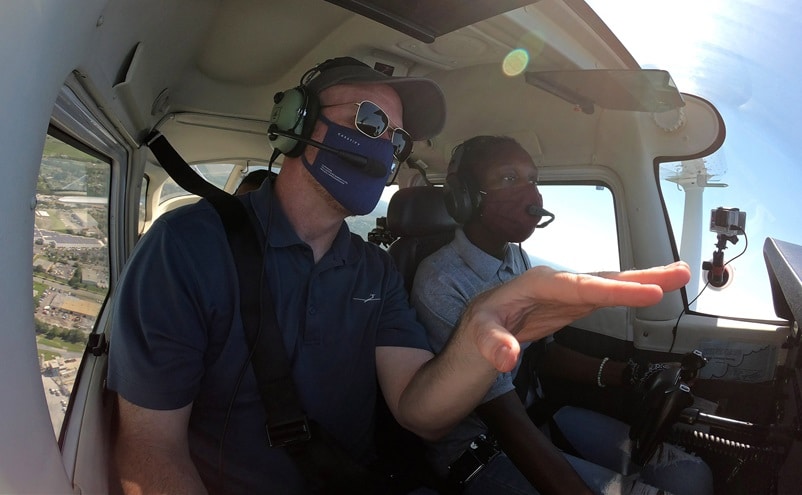This topic on in-flight instruction is designed for students who are looking at completing the flight instructor rating. The ground school for the Class 4 Flight instructor rating can begin once the CPL flight test and written exam are completed. To help with the CPL training, we recommend joining our CPL Ground School course here. Some content was taken from the Flight Instructor Guide and adapted to our article on in-flight instruction.
When conducting in-flight teaching there should never be any doubt as to who has control of the aircraft. As pilot-in-command you will always have final authority as to who has control. To avoid ambiguity, be firm and use statements like “your control” or “I have control.” While the student has control do not “ride” the controls (even the rudders.)
In-Flight Instruction
- When teaching in flight always try and relate information to what has already been taught in the PGI
- Always give a perfect demonstration when showing a new exercise
- There are three methods to explaining
- Explaining before the demonstration can help direct the student’s attention to a certain aspect of the demo
- Explaining during helps with longer demonstrations like a forced approach
- Explaining afterwards is acceptable but is not often practical (imagine demo-ing a spin then explaining afterwards what happened, the student will realize flying is for birds)
- When teaching complex maneuvers and after the initial demo, break the exercise down into smaller portions re-demonstrating and re-explaining the broken down maneuver. Allow the student to try this smaller portion and continue adding parts until the student can practice the whole maneuver.
- Do not move on until the smaller portions are mastered (primacy)
- Watch for major errors while the student practices for the first time. Correct these errors and help prevent them.
- As the student masters the exercise, watch for smaller errors
- At the end of the exercise, demonstrate the next lesson perfectly so your student can better understand the material in the FTM while completing their homework readings.
Analyzing Students In-Flight
- Always take control while analyzing their performance so they can devote their full attention to you.
- During early stages, do not be over critical of their faults in-flight.
- Help the student assess their own performance, leave no ambiguity
- Strengths – Always identify strengths
- Weaknesses – which weakness if solved now will help the most problems if corrected.
In some cases you may ask the student to analyze the errors in a particular sequence, usually this will happen during latter stages of training. Correct major faults first and then, as improvement is noted, correct the minor errors. If a student indicates problems on a solo flight, it may be possible to analyze the problems from the student’s description of actions and the aircraft’s response.
The correct technique can then be reviewed and practised on the next flight. Sometimes, however, students may not be able to identify or describe a problem clearly enough for a good ground analysis to be made. You should then fly the exercise on the next dual flight where you can analyze the performance and correct any faults.
Planning of Flights and In-Flight Instruction
Always plan the flight to avoid lulls during the flight and make this plan known to students during the pre-flight briefing. Using the lesson plans found here as a guide, from the Flight Instructor Guide or company lesson plans can help. Always use a copy while flying to avoid missing items you would have otherwise forgotten and to keep you on track.
Always consider fuel, weather, terrain and other logical things when planning a flight. Need to do map reading? Do it on the way out to or from the practice area. Need to demonstrate a slip for the next lesson? Do it in the circuit.
Time spent going to and from the practice area can be utilized to full advantage. Suggested items among other things, that might be included are:
- airspeed changes;
- ground speed checks;
- low level navigation;
- VOR or ADF introduction;
- discussions of traffic pattern joining procedures should wind change;
- emergency procedures;
- D.F. Steers;
- map reading;
- estimated times of arrival;
- application of rule of thumb procedures; and
- diversions (navigation).


